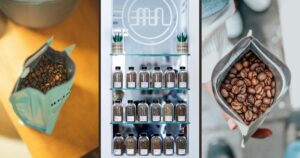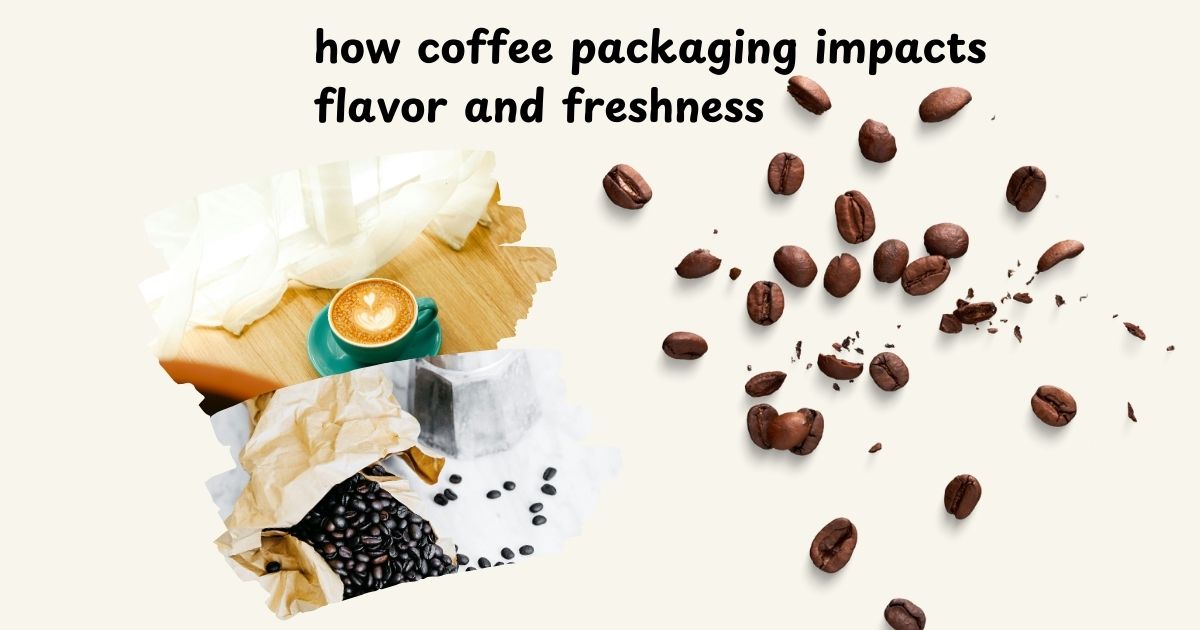Last updated on February 24th, 2025 at 01:36 pm
Let’s talk coffee. I’ve always loved that first, rich sip, the way the aroma fills my senses, and the way it wakes me up in the morning. But you know what can ruin a perfect cup? Stale coffee. It’s like the life has been sucked right out of it. That’s why I’m so passionate about understanding how coffee packaging impacts its flavor and freshness.
What Affects Coffee Freshness?
Think of coffee freshness like a delicate dance. There are a few key partners that determine how long those amazing flavors last.
- Roasting Date: Imagine freshly roasted coffee beans. They’re bursting with energy, full of vibrant oils and complex aromas. But like a wilting flower, that freshness fades over time. The closer you are to the roast date, the more intense and flavorful your coffee will be.
- Bean Variety: Just like grapes make different wines, coffee beans from different regions and varieties have unique characteristics. Some beans are naturally more robust and can hold onto their freshness longer, while others are more delicate.
- Roasting Level: Roasting is like cooking – you can cook a steak rare or well-done. Light roasts tend to be more delicate and can lose their brightness faster, while darker roasts often have a longer shelf life.
Packaging Technologies That Preserve Coffee Freshness
Now, let’s talk about the clever ways packaging keeps our coffee fresh. Think of it as a protective shield against the enemies of flavor:
- Vacuum Sealing: Imagine sucking all the air out of a bag. That’s essentially what vacuum sealing does. By removing oxygen, it slows down the staling process, keeping those delicious oils and aromas locked in. You’ll often find vacuum-sealed coffee in cans or special bags.
- Gas Flushing: This technique is like a magic trick. Instead of removing air, it replaces it with inert gases like nitrogen or carbon dioxide. These gases act as a protective blanket, shielding the coffee from oxygen and keeping it fresh for longer. You might encounter this in modified atmosphere packaging (MAP) bags.
- One-Way Degassing Valves: Freshly roasted coffee releases carbon dioxide. These tiny valves act like one-way doors, allowing the gas to escape while preventing air from entering. This keeps the bag from bloating and helps maintain freshness.
Packaging Methods that Preserve Coffee Freshness

Just like we have different types of containers for different foods, coffee has its own packaging options, each with its own strengths:
- Rigid Containers: Think sturdy tin cans or glass jars. These offer excellent protection against light, moisture, and oxygen. However, they can be a bit bulky to store.
- Flexible Pouches: These lightweight and versatile bags are easy to store and transport. They come in various forms, from stand-up pouches to flat bags. While they may not offer the same level of protection as rigid containers, many incorporate special barrier layers to keep the coffee fresh.
- Foil Bags: These bags are like little fortresses for your coffee. The foil layer provides an excellent barrier against light and oxygen, helping to preserve those precious flavors.
By understanding these packaging technologies and methods, you can make informed choices when selecting your coffee, ensuring a truly enjoyable cup every time.
How Different Packaging Affects Coffee Flavor and Freshness
Now that we understand the role of packaging, let’s dive deeper into how it actually impacts the flavor and freshness of our coffee:
- Impact of Oxygen: Imagine leaving a sliced apple out on the counter. It quickly turns brown, right? That’s oxidation in action. Oxygen is the enemy of coffee freshness. It reacts with the coffee oils, leading to staling. This results in a dull, lifeless flavor and a significant loss of aroma. You might even notice off-flavors like cardboard or paper.
- Impact of Moisture: Moisture is another major culprit. It can create a breeding ground for mold, which can completely ruin your coffee. Even without mold, excess moisture can cause the coffee to become stale and lose its vibrant flavors.
- Impact of Light: Just like our skin, coffee is sensitive to sunlight. UV light can degrade the delicate oils in coffee, leading to a loss of aroma and a muted flavor profile.
Does Packaging Affect Coffee Freshness?
Absolutely! Packaging plays a crucial role in protecting coffee from these enemies.
- Think about it: Compare storing coffee in a flimsy, poorly sealed bag to a high-quality, vacuum-sealed bag. The vacuum-sealed bag will significantly outperform the flimsy bag in preserving freshness.
- Light exposure is another key factor. Coffee stored in a clear glass jar on a sunny windowsill will degrade much faster than coffee stored in an opaque container in a dark pantry.
By understanding how packaging impacts coffee, you can make informed choices to ensure you’re enjoying the freshest, most flavorful cup possible.
Why is Coffee Packaging Important?
Beyond just keeping your coffee fresh, packaging plays a vital role in the overall coffee experience:
- Preserving Quality: High-quality packaging ensures that the coffee you buy maintains its peak flavor and aroma from the roaster to your cup. This means you get to enjoy the coffee exactly as the roaster intended.
- Brand Identity: Packaging is like a visual story. It communicates the brand’s values, whether it’s sustainability, quality, or a focus on artisanal craftsmanship. A beautifully designed package can create a memorable and engaging experience for the consumer.
- Consumer Convenience: Think about it: easy-to-open bags, resealable features, and clear product information all contribute to a more convenient and enjoyable coffee experience.
How should coffee be stored to maintain freshness?
Even with the best packaging, proper storage at home is key to enjoying the freshest cup:
- Cool, Dark, and Dry Place: Imagine a cozy, dark corner in your pantry. That’s the ideal spot for your coffee. Avoid direct sunlight, heat sources like ovens or radiators, and areas with high humidity.
- Properly Seal Packaging: Once you open a bag of coffee, reseal it tightly to minimize air exposure. Use airtight containers or transfer the coffee to a freezer bag with the air removed.
- Consider Freezing (Optional): Freezing can significantly extend the shelf life of your coffee. However, it’s important to thaw it properly before grinding or brewing to prevent moisture buildup.
By following these simple tips, you can ensure that your coffee stays fresh and flavorful, cup after cup.
From the bean to your cup, coffee packaging plays a crucial role in preserving flavor and freshness. By understanding the impact of different packaging technologies and methods, and by storing your coffee properly, you can ensure that every cup is a truly enjoyable experience.

Hi, I’m Akash Chowdhury, a coffee enthusiast and writer passionate about exploring the world of coffee. From brewing techniques to the finest beans, I love sharing insights to help you enjoy the perfect cup. Read more about me here.

